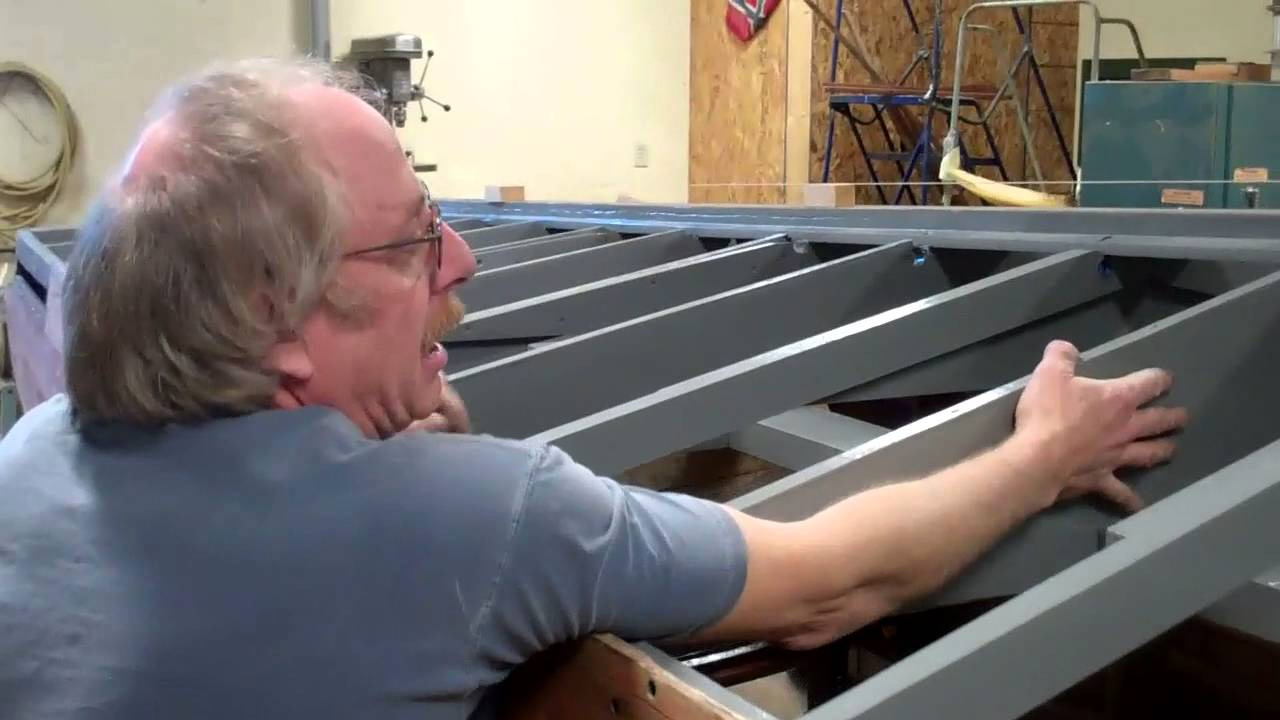We reached a critical milestone in this preservation project this morning. The repair and preservation of the bilge framing, stem and keel of my 1953 22’ Shepherd Sportsman 110-S is behind us!
All existing fasteners have been replaced with silicon bronze.
About 40% of the ribs were replaced completely, including all the frames beneath the engine compartment. We added stiffness by replacing the 7/8” thick mahogany with 1-1/8” white oak ribs.
Almost every other rib was repaired to some extent, with all of the fasteners replaced in the components of the floating (secondary) ribs.
As chronicled in an earlier video, John rebuilt the gripe and knee using his amazing Dutchman technique.
The broken and rotted aft 3’ of the keel has been replaced and repaired by John using a long scarf joint.
Every gusset at the knees was fabricated anew and installed bedded in 5200.
Everything has been re-installed bedded in 5200. (No, I do not care that we have created a nightmare for whoever is “lucky” and inherits the challenge of disassembling the literal monolith we have created.
She came to us suffering a significantly hogged keel amidships. Years of hanging with water in the bilge almost up to the chines had taken its toll. Virtually all of the ribs in this center section had either loosened or completely broken away from the keel. The wood had rotted and stainless bolts had snapped. Sadly, the gunwales spread about 1-1/2” as a result, and the still-attached ribs tugged the keel into the hull.
We squeezed her hull until her beam returned to 7’, braced her and, using strategically-placed chain falls, gently teased the keel back into its proper shape. Rotted floating frames were then fabricated anew to fit properly, rather than to the dimensions of the failed members. The solid ribs were shimmed ever so slightly. Finally we had every rib landing properly on a keel that is straight as an arrow, at which point every joint was bedded in 5200, and secured with new silicon bronze carriage bolts.
Her former owner mentioned that the hull seemed to flex when he dropped the hammer on the Hemi. No wonder, since the bottom planking was at best symbolically fastened to the ribs and chines, and many of the ribs themselves had long ago been freed at their landings.
All of the components’ surfaced received three coats of CPES, followed by two coats of Interlux Bilgekote before being reassembled and installed. All surfaces then received another coat of Bilgekote.
Fabricating and installing the inner layer of 5/16” Okoume plywood is next. Using construction paper, and starting at the bow, John will begin patterning the pieces. All surfaces, and especially the edges of each sheet, will then be sealed with three coats of CPES, and the inner side will get two coats of Bilgekote.
Once installed, bedded in copious amounts of 5200, the hull will be materially stiffer than it is now based on John’s test, scaling the hull and bouncing up and down on the keel. OMG!
And me? All of those mahogany bottom planks must be cleaned, sanded and sealed with CPES before being bedded in a literal sheet of 5200 and screwed down.
In answer to an earlier question, given the size of the Shepherd’s bottom, we project needing at least 75 tubes of 5200, and several thousand #8 silicone bronze wood screws to complete this process.

